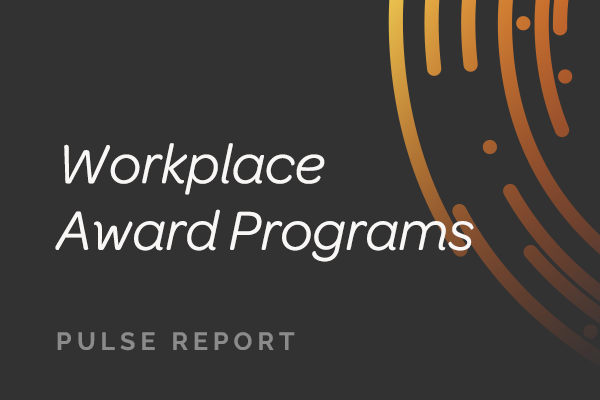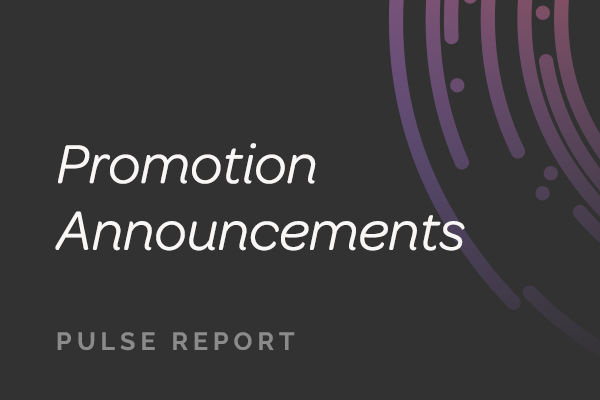
Five Fundamentals of an Effective Employee Retention Strategy
March 2, 2022
Since 2021, 33 million employees have chosen to leave their jobs in what has often been called the Great Resignation. But employees are not quitting to be idle — they’re moving to better jobs. Guy Berger of LinkedIn calls it the Great Reshuffle and NPR dubs it the Great Renegotiation. Whatever term you use, it’s clear that all organizations and HR professionals need a robust employee retention strategy in place to prevent the headache (and cost) of losing valued personnel. Why? Because waiting until the exit interview to learn about why someone is leaving is too late.

But how and where do you begin? Here are five ways to engage, listen to, and connect with employees before they decide to take their skills elsewhere:
1) Start with managers holding regular employee one-on-ones.
52% of employees exiting their company said they felt their manager could have done something to prevent them from leaving.
Having consistent, thoughtful employee 1:1s is one of the top ways to encourage loyalty to your company and improve retention. These meetings increase the odds of managers getting attuned to employee needs and provide opportunities to deliver on those needs.
Download your 1:1 pre-meeting template and 1:1 tracking template.
When employees feel heard by managers and see actions that target their concerns, feelings of positive feelings and mutual reciprocity can result — which can lead to higher retention.
Harvard Business Review has identified “5 Questions Every Manager Needs to Ask Their Direct Reports” that can be used during 1:1s, to proactively understand employee needs and concerns:
- How would you like to grow within this organization?
- Do you feel a sense of purpose in your job?
- What do you need from me to do your best work?
- What are we currently not doing as a company that you feel we should do?
- Do you have an opportunity to do what you do best every day?
2) Foster a culture of recognition, both privately and publicly.
Recognition of a job well done helps an employee feel valued — and less likely to run to the competition. When acknowledging employees’ work on a successful project or team win, use the key principles of recognition; be timely, be specific, be genuine, and fair.
Private recognition is important and can be effective for individuals who are internally motivated and do not feel comfortable in a public spotlight. Public recognition from leadership can be an effective way to set the standard for celebrating individual contributions to a team and encourage peer-to-peer recognition. It can be a powerful motivator and can convey values, both in the act and with the message content.
“Recognizing someone in public sends a message to everyone about what’s important to you and what success looks like. When you give an employee recognition, you don’t just motivate one person. You motivate many.” — The Enlightened Workplace Project
Do include a culture of recognition as a pillar of your employee retention strategy.
3) Give employees regular feedback, both formal and informal.
Performance management is a big topic; one that can come with big emotions for both management and employees. Perhaps it will suffice to state that specific goal setting and regular check-ins on progress and needs are imperative for employees to stay connected and feel supported.
Scheduled reviews and informal check-ins are the bread-and-butter of ensuring a vital connection. The following can be done:
- Establish agreed-upon goals, often at the beginning of the year.
- Hold formal monthly or quarterly check-ins.
- Establish clear progress milestone markers, often halfway through the year.
- Articulate when the annual review will occur.
4) Create a retention dashboard enabling actions designed to quickly address company-wide concerns.
Institute a sustainable and timely retention dashboard that includes key people metrics (e.g., turnover, tenure, rates of promotion, public recognition cadence, etc.). The data can be used to benchmark against other companies in your industry, and analysis can help you identify retention trends.
Delving into the “why” behind the numbers is as important as the data in the dashboard. This may be one of the more involved and complex aspects of an employee retention strategy. Actions to take include:
- Gather qualitative insights from your people managers through channels such as quarterly meetings, employee pulse surveys or employee stay interviews.
- Take the time to properly quantify, qualify and analyze the information.
- Generate clear and actionable outcomes with leadership buy-in, along with a change management plan that addresses your employees’ needs.
Develop your strategy deliberately to address the challenges your employees face — and do it with urgency. While it can be tempting to think an employee issue is isolated to one person or team, in the climate of The Great Resignation, word will spread.
5) Leverage career development and upskilling opportunities as powerful levers of talent management.
As HBR points out, “When employees are offered and encouraged to take advantage of upskilling opportunities for their personal or professional growth, people metrics, such as employee engagement and retention, also go up.”
Many companies focused only on short-term upskilling when a new era of working from home forced employers and employees to learn and adapt quickly. And not without growing pains. While that may have offered smaller, skill-based opportunities, it is not a substitute for long-term career development.
“Employees want to understand their potential future at a company, and what skills, competencies, and capabilities they need to get there,” Patrice Low, vice president of human resources at Cengage Group, told HBR. “Companies that can’t help answer some element of these critical questions will lose out on great talent.”
As The Great Resignation and Covid-19 continue to drive the need for a multi-faceted approach to the future of work, employees are looking to refresh their skillsets and be perceived as knowledgeable by their organizations. Creating a skills framework and aligning newly acquired skills to career or personal development will lead to higher rates of employee retention. If you’re tight on the bandwidth you need to develop your upskill strategy, we are here to assist you.
Learn more about how ROI helped Zoom with its career development planning program.
In short, employees are moving, not quitting. Don’t wait until the exit interview to find out what was missing in your employee retention strategy. Take action to ensure your employees feel heard by their manager, valued, recognized for their contributions, and are given meaningful opportunities to do their best work. The resulting sense of loyalty can be the determining factor in whether or not your employees will stick around.
Contributors:
Andrea Gonzalez
Director of Marketing
Andrea leads ROI’s marketing and sales team, where she brings a decade of experience supporting global brands, such as the $50 million Jackson Family Wines. With a focus on data analytics and operational efficiency, Andrea oversees all of our marketing efforts, sales outreach and public relations. She lives in San Jose where she enjoys antiquing.




